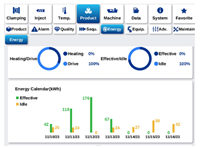Testing: Melt-Flow Indexer Links Lab, Production Machinery
‘Groundbreakingly accurate’ machine features unified software platform between all laboratory and online production equipment.
The LMI5500 Series Melt Flow Indexer from Dynisco, Franklin Park, Mass., has an array of features and benefits that range from “ground-breaking accuracy” to a unified software platform between all laboratory and online production equipment.
The LMI5500 brings a new level of ease of use with its easy to clean removable inspection plate, increased access for sample cutting, and revamped intuitive touch screen. This enables processors to obtain detailed analytics between lab and production data globally on a single dashboard with the Win10 IoT Core + Single Board Computer (SBC) platform, the company says.
The LMI5500 Series features and benefits include:
• New Capacitive Windows 10 IoT Native Interface
• Capacitive Touch Screen
• Built in WIFI, Ethernet and Bluetooth
• HDMI and multiple USB ports
• Enhanced temperature calibration for ASTM D1238, ISO 1133-1 and -2 Standards
• Increased access to the die for sample cutting with a strategically placed mirror to easily view the die and cutting area
• Easy to clean, removeable inspection mirror and sample plate
Compact footprint with a 3.5” reduction in depth
• Direct digital scale USB interface for sample weighing
• Digital Encoder for use with B, A/B, and intrinsic viscosity (IV) correlation
• Multiple languages available
A gravitational-correction feature (provisional patent obtained) takes into account gravity based on one’s geographical location.
Related Content
-
Video Extensometer for Tensile, Compression and Bend Testing
Instron released the AVE3 Advanced non-contacting video extensometer for strain measurement with micron-level accuracy for tensile, compression and bend testing.
-
Melt Sensor Offers Real-Time Viscoelastic Measurement
Polymer melt analyzer billed as “big leap” in sensor technology.
-
Using a Melt Flow Indexer to Test Your Pressure Transducer
The MFI tester enables collection of meaningful pressure data in transducers in a relatively short time, providing realistic measures of the response time of a pressure transducer. This information is critical in the interpretation of pressure data measured in an extrusion process.





